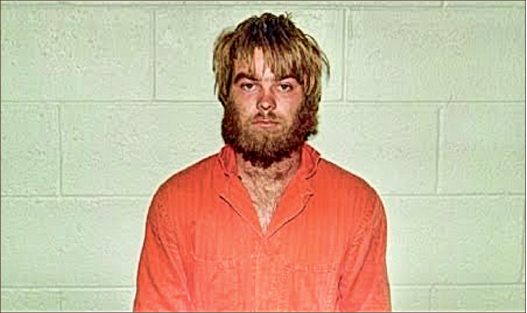The court of public opinion

Captivating docu-series grip audiences, impact long-standing convictions
Within the last 18 months, a gripping new genre of true-crime documentary has burst onto the entertainment scene under two notable identities: “Serial” and “Making a Murderer.”
Each of these now household-name shows has added an unprecedented layer of gritty immersion and real-time drama with audiences who not only watch or listen, but even partake in the unfolding investigation as armchair detectives.
The content of each show runs along a similar vein: dramatic murder cases with sketchy outcomes.
In the podcast “Serial,” journalist Sarah Koenig reopened the nearly 20-year-old murder case of Hae Min Lee. Adnan Syed, Lee’s ex-boyfriend, was convicted of her murder and imprisoned.

CRIMINAL — Steven Avery’s case gained widespread attention following the release of the 2015 Netflix series “Making a Murderer”. Photo credit: Google images
However, Koenig further investigates the story, noting the chance that Syed may have been innocent all these years.
Koenig chronicles her work through a superbly-produced podcast series, which has accrued over 5 million downloads.
Interviews, testimonies and Koenig’s privy narration keep the story moving.
After two “Serial” seasons and 17 years of imprisonment, Syed has just been granted a new trial this year.
Netflix original series “Making a Murderer” reopened the 2005 rape and murder case of photographer Teresa Halbach.
Filmed over a 10-year period, the show delves into the story of convicted murder suspect Steven Avery, ultimately questioning his actual guilt in the case.
It also focuses on the questioning and prosecution of Avery’s nephew, Brendan Dassey, who was convicted as an accomplice in the crime.
This August, Dassey’s conviction was overturned on grounds of unethical interrogation methods employed by the authorities toward the teenager in 2005. According to the New York Times, Avery himself may even face exoneration now.
The ratings don’t lie, and neither does the response.
These two shows have been responsible for some huge legal decisions being altered by the justice system, which, as a Salon article wryly noted, is “supposed to be impervious to these kinds of pressures.”
But what else is so off about this whole phenomenon?
Thanks to these shows, we know what’s off about the justice system: mistaken witness testimony, faulty forensic science, unethical interrogation and suppression of evidence.
All of these and many more faults are actual, major issues that of course need to be addressed.
But the focus of exposés such as “Serial” and Making a Murderer” seems to pan away from one central, binding core of these apparently slipshod investigations, these wrenchingly over-stretched cases, and the “reopened wounds” as put
by the Lee family.
When we watch these shows, are we observing the cogs, wheels and rust of our justice system for deeper insight into how it works and how it may need to be fixed?
Or are we voyeurs into an irresistible real-life drama, born from a real family’s anguish?
Are we simply gobbling up a new high-end immersive thrill, the likes of which you could get from playing an “Arkham” game?
That is not to say that the justice-seeking documentary should be held in cynical disregard.
“Serial” and “Making a Murderer” still serve as important journalistic staples in our culture and history (although the quality of the journalism itself is a separate issue up for dispute).
However, maybe we should not be so honed in on clearing convicted individuals that we forget to take a few steps back and try to fix the whole system that may have wronged them in the first place. Sure, it may cut juicy story material for some; but it may also save years of unnecessary pain and questions for others.
Jarrett is an opinion writer.
